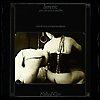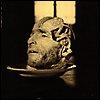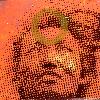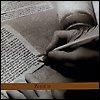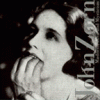Kristallnacht
1993
|
Zorn composition detailing the horror of the Holocaust. Possibly his most serious, mature work, and an emotionally taxing listen.
Performers are Marc Ribot, Frank London, Mark Feldman, Anthony Coleman, David Krakauer, and William Winant. This was the first release by Zorn indicating his devotion to Judaism, and a forerunner to his Masada projects.
The music is avant-garde classical. Some passages sound improvised, will others are tightly structured and arranged. The second track, "Never Again," is given a disclaimer by Zorn--he doesn't recommend repeated listens because of the possibility of headaches, nausea, and damage to the listeners' ears.
Representative tracks
Shtetl: The first track on the album begins with a Hebrew fanfare from the trumpet, and foreshadows the experience ahead. Remarkable chemistry among players; Zorn usually works with the same core of musicians, and it has really paid off. Dissonant, but exhilirating.
Tikkun: Mark Feldman shines on this movement. Again, turbulent passages alternate with moments of grace to form Zorn's best work. Music is in the tradition of Stravinsky, Schoenberg, Carl Stalling, and Varese.
|
|
Personnel:
Mark Feldman, Marc Ribot, Anthony Coleman, Mark Dresser, William Winant, David Krakauer, Frank London
|






